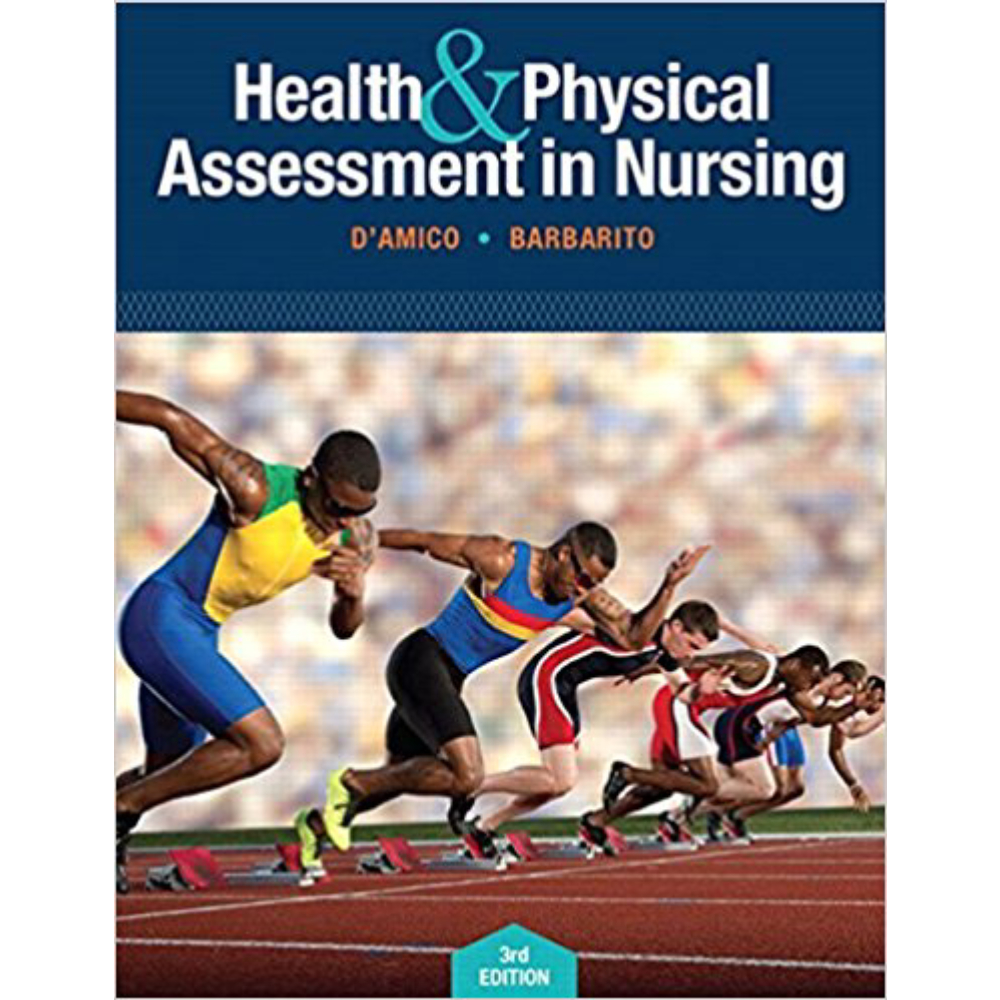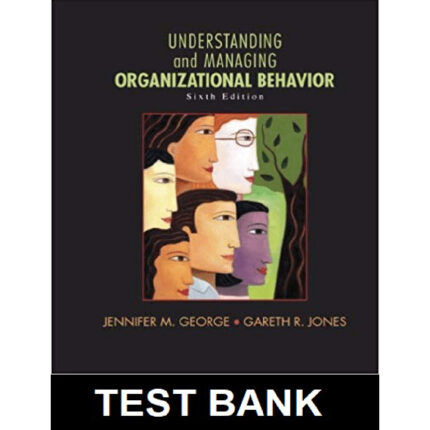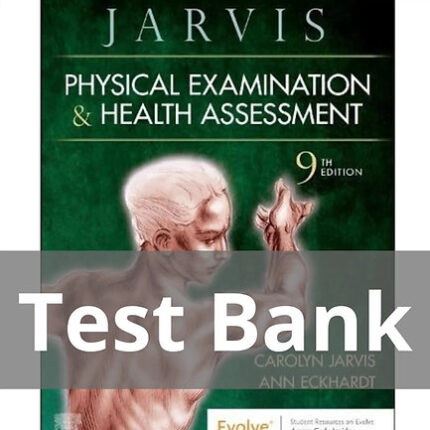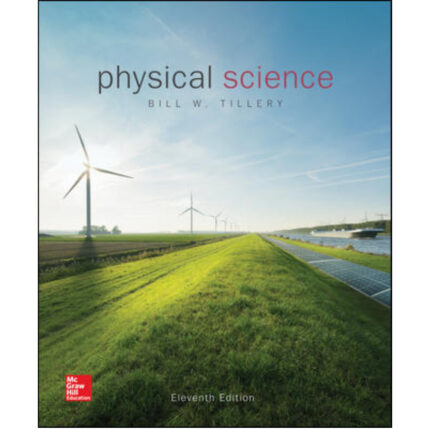Health & Physical Assessment In Nursing 3rd Edition by Donita T D’Amico – Test Bank
Chapter 11
Question 1
Type: MCSA
The nurse is assessing pain level with vital signs for an adolescent client. The client is reporting pain but when the nurse asks for a description of the pain the client says, “It just hurts. Why can’t I have something?” Which action by the nurse is the most appropriate?
1. Leave the room and come back later.
2. Provide questions that require yes or no answers related to pain.
3. Ask the client what they would like to have for pain.
4. Continue with the vital signs assessment.
Correct Answer: 2
Rationale 1: Leaving the room will not provide effective pain management.
Rationale 2: People who are not feeling well or who are in pain may have difficulty with open-ended questions, such as “Describe ….” The nurse may be better able to obtain an accurate description of their pain by having them respond to descriptive words.
Rationale 3: Asking the client what she would like for pain is not appropriate without a complete assessment.
Rationale 4: If the client is in pain, moving on to the vital signs will not yield additional information.
Global Rationale: People who are not feeling well or who are in pain may have difficulty with open-ended questions, such as “Describe ….” The nurse may be better able to obtain an accurate description of their pain by having them respond to descriptive words. Leaving the room will not provide effective pain management. Asking the client what she would like for pain is not appropriate without a complete assessment. If the client is in pain, moving on to the vital signs will not yield additional information.
Cognitive Level: Applying
Client Need: Physiological Integrity
Client Need Sub: Basic Care and Comfort
QSEN Competencies: I.B.4. Assess presence and extent of pain and suffering.
AACN Essentials Competencies: IX.1. Conduct comprehensive and focused physical, behavioral, psychological, spiritual, socioeconomic, and environmental assessments of health and illness parameters in patients, using developmentally and culturally appropriate approaches.
NLN Competencies: Context and Environment: Conduct population-based transcultural health assessments and interventions.
Nursing/Integrated Concepts: Nursing Process: Assessment
Learning Outcome: 11.5: Identify cultural and developmental influences that affect assessment of pain for patients across the lifespan.
MNL Learning Outcome: 1.3.3. Apply the principles of assessing pain in the care of a client.
Page Number: p. 177
Question 2
Type: MCSA
The nurse is working at a pain clinic and is preparing an orientation for new staff nurses. Which of the following definitions of pain would the nurse correctly choose to include in this orientation?
1. Pain is validated by the nurse determining the cause of the pain.
2. Pain is an unpleasant sensation, typically experienced upon movement.
3. Pain is whatever the experiencing person says it is.
4. Pain is very subjective, so observations must be used to assess levels and intensity.
Correct Answer: 3
Rationale 1: At times, the cause of the pain is not determined at the time the client reports it. The nurse’s role is not to validate the client’s report but to assess and assist in alleviating or managing the pain.
Rationale 2: Pain involves unpleasant sensations, though not always limited to movement.
Rationale 3: The most widely accepted definition of pain is the one offered by McCaffery: “whatever the experiencing person says it is, existing whenever he or she says it does” (McCaffery & Pasero, 1999, p. 5).
Rationale 4: Pain is a subjective experience and the client’s report of pain must be trusted in order to effectively manage it.
Global Rationale: The most widely accepted definition of pain is the one offered by McCaffery: “whatever the experiencing person says it is, existing whenever he or she says it does” (McCaffery & Pasero, 1999, p. 5). It involves unpleasant sensations, though not always limited to movement. At times, the cause of the pain is not determined at the time the client reports it. The nurse’s role is not to validate the client’s report but to assess and assist in alleviating or managing the pain. Pain is a subjective experience and the client’s report of pain must be trusted in order to effectively manage it.
Cognitive Level: Remembering
Client Need: Physiological Integrity
Client Need Sub: Basic Care and Comfort
QSEN Competencies: I.A.3. Demonstrate comprehensive understanding of the concepts of pain and suffering, including physiologic models of pain and comfort.
AACN Essentials Competencies: I.1. Integrate theories and concepts from liberal education into nursing practice.
NLN Competencies: Knowledge and Science: Relationships between knowledge/science and quality and safe patient care.
Nursing/Integrated Concepts: Nursing Process: Diagnosis
Learning Outcome: 11.1: Explore the concept of pain.
MNL Learning Outcome: 1.3.2. Classify the various sources and types of pain.
Page Number: p. 173
Question 3
Type: MCSA
The nurse is in the triage area of the emergency department when a client arrives complaining of chest and arm pain. The client also reports jaw pain, but states that the chest pain hurts more. The nurse observes the client rubbing his left arm. The nurse suspects which type of pain?
1. Phantom pain.
2. Radiating pain.
3. Intractable pain.
4. Cutaneous pain.
Correct Answer: 2
Rationale 1: Phantom pain is a painful sensation perceived in an absent body part or a body part that is paralyzed.
Rationale 2: The client is describing radiating pain, which has an origin in one part of the body and then spreads to other adjacent body parts.
Rationale 3: Intractable pain does not respond to relief measures.
Rationale 4: Cutaneous pain is pain experienced in the cutaneous tissues.
Global Rationale: The client is describing radiating pain, which has an origin in one part of the body and then spreads to other adjacent body parts. Phantom pain is a painful sensation perceived in an absent body part or a body part that is paralyzed. Intractable pain does not respond to relief measures. Cutaneous pain is pain experienced in the cutaneous tissues.
Cognitive Level: Remembering
Client Need: Physiological Integrity
Client Need Sub: Basic Care and Comfort
QSEN Competencies: I.A.3. Demonstrate comprehensive understanding of the concepts of pain and suffering, including physiologic models of pain and comfort.
AACN Essentials Competencies: I.1. Integrate theories and concepts from liberal education into nursing practice.
NLN Competencies: Knowledge and Science: Relationships between knowledge/science and quality and safe patient care.
Nursing/Integrated Concepts: Nursing Process: Assessment
Learning Outcome: 11.1: Explore the concept of pain.
MNL Learning Outcome: 1.3.2. Classify the various sources and types of pain.
Page Number: p. 176
Question 4
Type: MCSA
The nurse is caring for two clients involved in a motor vehicle accident. Both clients required explorative abdominal surgery. Neither has received any pain medication in six hours and both have asked. However, one client is in greater distress than the other. Which pain theory is useful in explaining this phenomenon?
1. Pattern.
2. Specificity.
3. Stress.
4. Gate control.
Correct Answer: 4
Rationale 1: Pattern theory implies that the pattern of the stimulus is more important than the specific stimulus. It does not address the psychosocial component of pain.
Rationale 2: Specificity theory holds that pain neurons are specific and unique, and the specific pain neurons transport the sensations directly to the brain.
Rationale 3: Stress does influence a client’s perception of pain but is not a specific theory.
Rationale 4: Gate control theory attempts to explain the involvement of the brain as well as nerve fibers in the pain experience. The involvement of the brain helps explain why painful stimuli are interpreted differently by people experiencing pain.
Global Rationale: Gate control theory attempts to explain the involvement of the brain as well as nerve fibers in the pain experience. The involvement of the brain helps explain why painful stimuli are interpreted differently by people experiencing pain. Specificity theory holds that pain neurons are specific and unique, and the specific pain neurons transport the sensations directly to the brain. Pattern theory implies that the pattern of the stimulus is more important than the specific stimulus. It does not address the psychosocial component of pain. Stress may impact a client’s perception of pain but is not a specific theory.
Cognitive Level: Remembering
Client Need: Physiological Integrity
Client Need Sub: Basic Care and Comfort
QSEN Competencies: I.A.3. Demonstrate comprehensive understanding of the concepts of pain and suffering, including physiologic models of pain and comfort.
AACN Essentials Competencies: I.1. Integrate theories and concepts from liberal education into nursing practice.
NLN Competencies: Knowledge and Science: Relationships between knowledge/science and quality and safe patient care.
Nursing/Integrated Concepts: Nursing Process: Assessment
Learning Outcome: 11.2: Outline the physiologic process involved in the perception of pain.
MNL Learning Outcome: 1.3.2. Classify the various sources and types of pain.
Page Number: p. 173
Question 5
Type: MCSA
The nurse is caring for a client who denies having pain. The nurse notices the client grimacing and clenching his teeth when moving. The client’s spouse has asked the nurse why some people deny obvious pain. Which response by the nurse is most appropriate?
1. “You should try to find out why your husband is denying the pain.”
2. “Have you talked to the healthcare provider about this?”
3. “Some people feel reporting their pain is a sign of weakness.”
4. “Maybe we are wrong and pain is not really bad.”
Correct Answer: 3
Rationale 1: The spouse has sought assistance from the nurse; the nurse should attempt to respond to the inquiry.
Rationale 2: The spouse is asking for information that is within the scope of nursing practice. There is no need to refer to the healthcare provider at this time.
Rationale 3: Adult clients may deny the presence of pain. Sometimes the denial is an effort not to appear weak.
Rationale 4: The nonverbal behaviors indicate the presence of pain.
Global Rationale: Adult clients may deny the presence of pain. Sometimes the denial is an effort not to appear weak. The spouse has sought assistance from the nurse; the nurse should attempt to respond to the inquiry. The spouse is asking for information that is within the scope of nursing practice. There is no need to refer to the healthcare provider at this time. The nonverbal behaviors indicate the presence of pain.
Cognitive Level: Analyzing
Client Need: Psychosocial Integrity
Client Need Sub: Basic Care and Comfort
QSEN Competencies: I.A.3. Demonstrate comprehensive understanding of the concepts of pain and suffering, including physiologic models of pain and comfort.
AACN Essentials Competencies: I.1. Integrate theories and concepts from liberal education into nursing practice.
NLN Competencies: Knowledge and Science: Relationships between knowledge/science and quality and safe patient care.
Nursing/Integrated Concepts: Nursing Process: Implementation
Learning Outcome: 11.4: Examine factors that influence pain perception and expression of pain.
MNL Learning Outcome: 1.3.1. Explain the developmental processes and sources of pain.
Page Number: p. 175
Question 6
Type: MCSA
A client with chronic pain from spinal stenosis has asked the nurse for assistance with pain management. The client is well dressed and composed, with normal vital signs. The nurse observes that the client grimaces when sitting but rates the pain at only a 2. The nurse suspects which of the following?
1. Needs to exercise instead of taking pain medication.
2. Is not in severe pain and does not need treatment.
3. Is getting better.
4. Has adapted to the pain and is able to control behaviors.
Correct Answer: 4
Rationale 1: The plan of care to determine interventions cannot be determined at this point.
Rationale 2: The client has stated that she is there for assistance with pain management, and the nurse has not completed the assessment.
Rationale 3: Determining that the client’s condition is improving is beyond the scope of practice for the nurse.
Rationale 4: People with chronic pain develop their individual coping styles to deal with pain, discomfort, or suffering. Also, physiologic responses may be marked in acute pain but because of central nervous system adaptation, physiologic responses are likely to be absent. Therefore, behavioral and physiologic responses are not good indicators of pain.
Global Rationale: People with chronic pain develop their individual coping styles to deal with pain, discomfort, or suffering. Also, physiologic responses may be marked in acute pain but because of central nervous system adaptation, physiologic responses are likely to be absent. Therefore, behavioral and physiologic responses are not good indicators of pain. Determining that the client’s condition is improving is beyond the scope of practice for the nurse. The client has stated that she is there for assistance with pain management, and the nurse has not completed the assessment. The plan of care to determine interventions cannot be determined at this point.
Cognitive Level: Analyzing
Client Need: Physiological Integrity
Client Need Sub: Basic Care and Comfort
QSEN Competencies: I.A.3. Demonstrate comprehensive understanding of the concepts of pain and suffering, including physiologic models of pain and comfort.
AACN Essentials Competencies: I.1. Integrate theories and concepts from liberal education into nursing practice.
NLN Competencies: Knowledge and Science: Relationships between knowledge/science and quality and safe patient care.
Nursing/Integrated Concepts: Nursing Process: Assessment
Learning Outcome: 11.4: Examine factors that influence pain perception and expression of pain.
MNL Learning Outcome: 1.3.1. Explain the developmental processes and sources of pain.
Page Number: p. 176
Question 7
Type: MCSA
The nurse is caring for two clients who both are in pain due to sickle cell anemia. One of the clients rates the pain as a 7 out of 10 (0 is no pain and 10 is the worst pain possible). This client is moving around easily and is eating well, but has asked for pain medicine. Which action by the nurse is the most appropriate?
1. Wait 30 minutes and see if the client is still requesting the pain medicine.
2. Administer half the ordered does of pain medication.
3. Administer the pain medication if it is has been longer than the ordered interval.
4. Notify the healthcare provider that the client is faking his pain.
Correct Answer: 3
Rationale 1: Waiting to administer the medication is inappropriate and is an action that appears to negate the client’s reports.
Rationale 2: Administration of only a portion of the ordered medication places the nurse in a position of prescribing medications and is outside the nurse’s scope of practice.
Rationale 3: Since pain occurs whenever the experiencing person says it does and is whatever the experiencing person says it is, the nurse should accurately assess and treat the pain with the pain medication if that is what is ordered.
Rationale 4: Notification to the healthcare provider that the patient is faking the pain is inappropriate as there is no evidence of this action.
Global Rationale: Since pain occurs whenever the experiencing person says it does and is whatever the experiencing person says it is, the nurse should accurately assess and treat the pain with the pain medication if that is what is ordered. Waiting to administer the medication is inappropriate and is an action that appears to negate the client’s reports. Administration of only a portion of the ordered medication places the nurse in a position of prescribing medications and is outside the nurse’s scope of practice. Notification to the healthcare provider that the patient is faking the pain is inappropriate as there is no evidence of this action.
Cognitive Level: Understanding
Client Need: Physiological Integrity
Client Need Sub: Basic Care and Comfort
QSEN Competencies: I.A.3. Demonstrate comprehensive understanding of the concepts of pain and suffering, including physiologic models of pain and comfort.
AACN Essentials Competencies: I.1. Integrate theories and concepts from liberal education into nursing practice.
NLN Competencies: Knowledge and Science: Relationships between knowledge/science and quality and safe patient care.
Nursing/Integrated Concepts: Nursing Process: Implementation
Learning Outcome: 11.4: Examine factors that influence pain perception and expression of pain.
MNL Learning Outcome: 1.3.1. Explain the developmental processes and sources of pain.
Page Number: p. 176
Question 8
Type: MCSA
The nurse is assessing a postoperative client who reports a pain level of 10 on a 0 to 10 scale. The client is grimacing and appears anxious. Which is the priority action by the nurse?
1. Administer pain medication if it has been longer than the ordered interval.
2. Offer to call the pastoral service to provide spiritual counseling.
3. Obtain an order for an anti-anxiety medication.
4. Call the family to come in and stay with the client.
Correct Answer: 1
Rationale 1: Pain needs to be well managed and pain should be assessed with vital signs. Pain is the fifth vital sign. Pain needs to be well managed with pain medications given on a scheduled basis, so that the pain does not get “out of control.” Once the pain is under control, the nurse can assess other factors influencing the client’s pain response.
Rationale 2: Spiritual counseling may not be helpful if the pain is not managed effectively.
Rationale 3: Relieving the anxiety may help in alleviating pain and should be considered with other forms of pain management. However, relieving anxiety will be easier if the pain is managed effectively.
Rationale 4: The presence of family members may provide comfort to the client, but is not the priority intervention.
Global Rationale: Pain needs to be well managed and pain should be assessed with vital signs. Pain is the fifth vital sign. Pain needs to be well managed with pain medications given on a scheduled basis, so that the pain does not get “out of control.” Once the pain is under control, the nurse can assess other factors influencing the client’s pain response. Spiritual counseling may not be helpful if the pain is not managed effectively. Relieving the anxiety may help in alleviating pain and should be considered with other forms of pain management. However, relieving anxiety will be easier if the pain is managed effectively. The presence of family members may provide comfort to the client, but is not the priority intervention.
Cognitive Level: Applying
Client Need: Physiological Integrity
Client Need Sub: Basic Care and Comfort
QSEN Competencies: I.B.4. Assess presence and extent of pain and suffering.
AACN Essentials Competencies: IX.1. Conduct comprehensive and focused physical, behavioral, psychological, spiritual, socioeconomic, and environmental assessments of health and illness parameters in patients, using developmentally and culturally appropriate approaches.
NLN Competencies: Context and Environment: Conduct population-based transcultural health assessments and interventions.
Nursing/Integrated Concepts: Nursing Process: Implementation
Learning Outcome: 11.6: Demonstrate techniques used for assessment of a patient having pain.
MNL Learning Outcome: 1.3.3. Apply the principles of assessing pain in the care of a client.
Page Number: pp. 177–179
Question 9
Type: MCMA
The nurse is assessing a client admitted with severe abdominal pain. Which are essential components of a pain assessment?
Standard Text: Select all that apply.
1. Description of the pain.
2. Temperature, pulse, respirations, and blood pressure.
3. Pain intensity rating.
4. Family medical history.
5. Previous pain experience.
Correct Answer: 1, 2, 3, 5
Rationale 1: The nurse assessing the client will need to determine characteristics of the pain. These characteristics, expressed by the client, will aid in the management of the condition.
Rationale 2: The vital signs of the client reporting acute pain will likely provide supportive information concerning the pain being experienced.
Rationale 3: An integral part of the definition of pain is that it is what the individual reports it to be. The degree of intensity will be needed to determine the level of pain being experienced. The degree of pain intensity assessment will be a key component in the interventions being used to manage the pain.
Rationale 4: While the family medical history is a component of a generalized health assessment it is not specific to the assessment of pain.
Rationale 5: An individual’s past experience with pain is a determining factor in the ability to manage pain. Past experience will also impact reports of pain by the client.
Global Rationale: The nurse assessing the client will need to determine characteristics of the pain. These characteristics, expressed by the client, will aid in the management of the condition. The vital signs of the client reporting acute pain will likely provide supportive information concerning the pain being experienced. An integral part of the definition of pain is that it is what the individual reports it to be. The degree of intensity will be needed to determine the level of pain being experienced. The degree of pain intensity assessment will be a key component in the interventions being used to manage the pain. An individual’s past experience with pain is a determining factor in the ability to manage pain. Past experience will also impact reports of pain by the client. While the family medical history is a component of a generalized health assessment it is not specific to the assessment of pain.
Cognitive Level: Applying
Client Need: Physiological Integrity
Client Need Sub: Basic Care and Comfort
QSEN Competencies: I.A.3. Demonstrate comprehensive understanding of the concepts of pain and suffering, including physiologic models of pain and comfort.
AACN Essentials Competencies: I.1. Integrate theories and concepts from liberal education into nursing practice.
NLN Competencies: Knowledge and Science: Relationships between knowledge/science and quality and safe patient care.
Nursing/Integrated Concepts: Nursing Process: Assessment
Learning Outcome: 11.1: Explore the concept of pain.
MNL Learning Outcome: 1.3.2. Classify the various sources and types of pain.
Page Number: pp. 179–183
Question 10
Type: MCSA
The nurse is caring for a client complaining of a backache and administers ibuprofen. The client asks the nurse how the medication will help the pain. The nurse bases the response on ibuprofen’s effect during which phase of nociception?
1. Transduction.
2. Transmission.
3. Perception.
4. Modulation.
Correct Answer: 1
Rationale 1: Since ibuprofen blocks the production of prostaglandin, it acts during the transduction phase.
Rationale 2: In the transmission phase, the pain impulse travels from peripheral nerve fibers to the spinal cord to the brain stem and thalamus, and ultimately, to the somatic sensory cortex.
Rationale 3: Perception occurs when the client becomes aware of the pain.
Rationale 4: Modulation is the process by which neurons in the brain stem send signals back down stimulating the release of neurotransmitters that can inhibit the ascending pain impulses.
Global Rationale: Since ibuprofen blocks the production of prostaglandin, it acts during the transduction phase. In the transmission phase, the pain impulse travels from peripheral nerve fibers to the spinal cord to the brain stem and thalamus, and ultimately, to the somatic sensory cortex. Perception occurs when the client becomes aware of the pain. Modulation is the process by which neurons in the brain stem send signals back down stimulating the release of neurotransmitters that can inhibit the ascending pain impulses.
Cognitive Level: Remembering
Client Need: Physiological Integrity
Client Need Sub: Basic Care and Comfort
QSEN Competencies: I.A.3. Demonstrate comprehensive understanding of the concepts of pain and suffering, including physiologic models of pain and comfort.
AACN Essentials Competencies: I.1. Integrate theories and concepts from liberal education into nursing practice.
NLN Competencies: Knowledge and Science: Relationships between knowledge/science and quality and safe patient care.
Nursing/Integrated Concepts: Nursing Process: Implementation
Learning Outcome: 11.2: Outline the physiologic process involved in the perception of pain.
MNL Learning Outcome: 1.3.2. Classify the various sources and types of pain.
Page Number: p. 174













Reviews
There are no reviews yet.